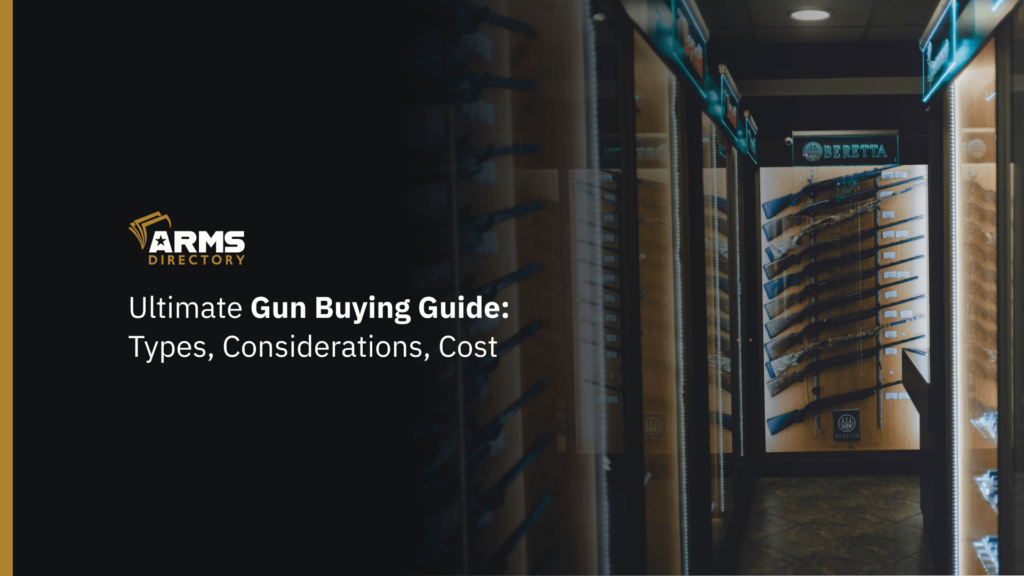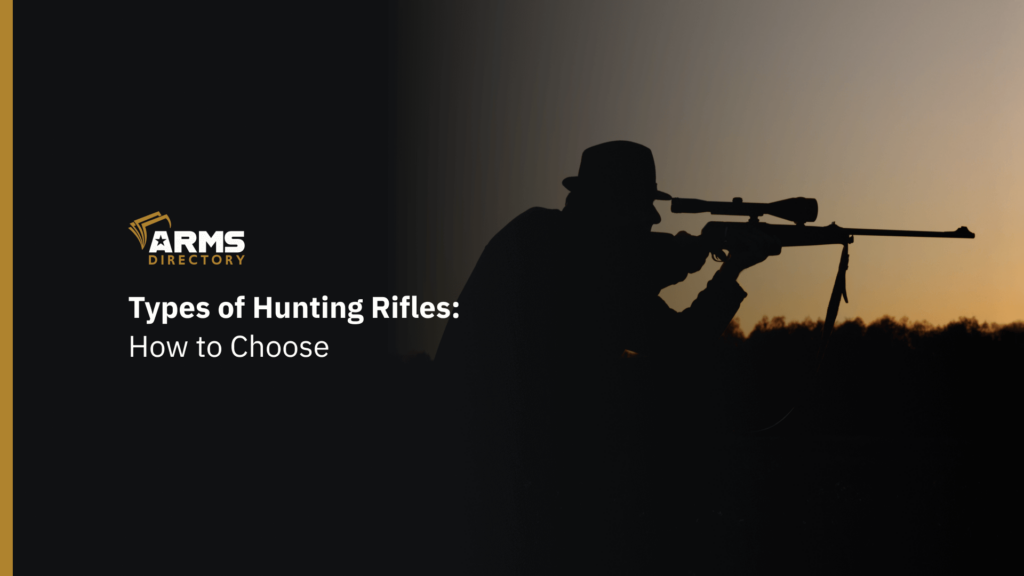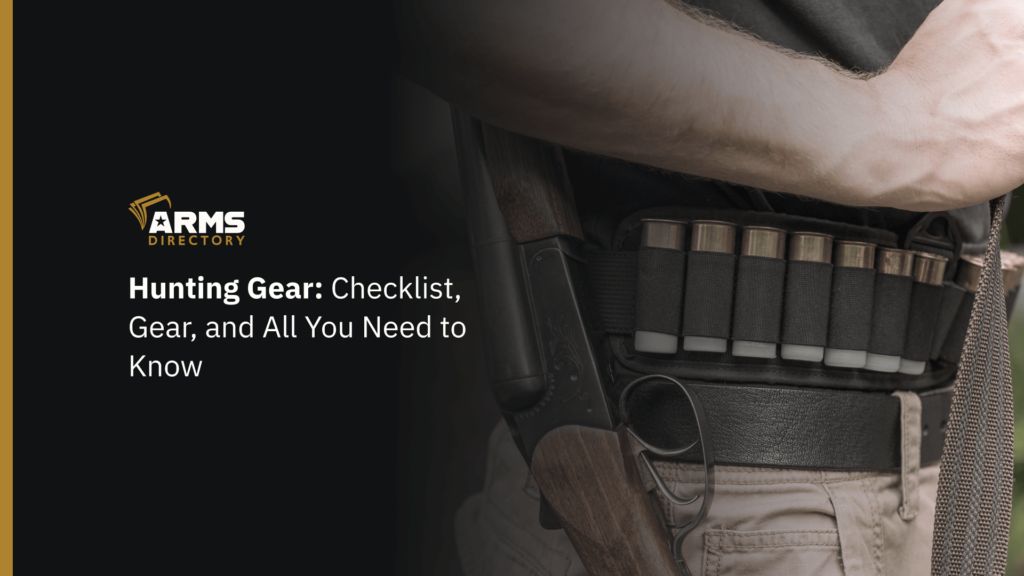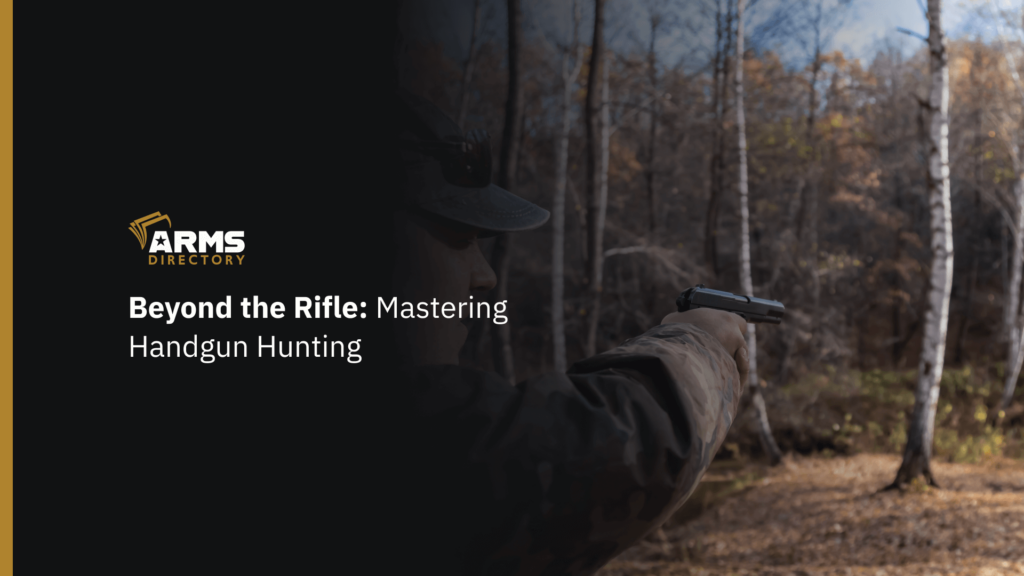
Beyond the Rifle: Mastering Handgun Hunting
Many people think hunting with a handgun is a lot different from hunting with a big rifle, but it isn’t. With the right handgun, ammo and practice, you can use a handgun to hunt animals like wild hogs, deer, or even black bears.
One good thing about handguns is that they’re smaller and easier to carry. However, using them for hunting can also be challenging. Since they have less range than rifles, you need to get closer to your target. This definitely leads to adrenaline boost, but it also means a higher skill level.
In this article, we’re discussing all things handgun hunting so that by the end, you will have enough general information to decide whether you want to try it or not. From different hunting scenarios and skills, to handgun and ammo options, keep reading to find out more.
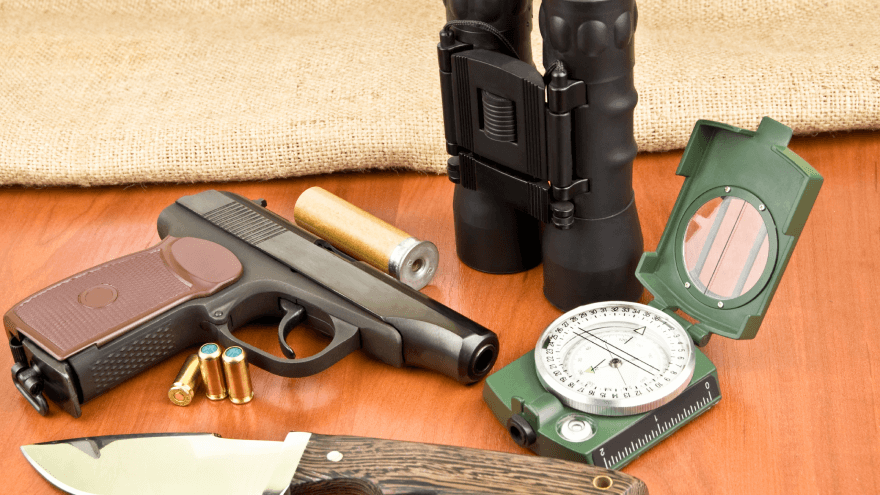
Handgun Hunting: Pros and Cons
As with any exciting adventure, hunting with a pistol comes with advantages and disadvantages to weigh before you start.
Pros:
- You can carry handguns around easily, they’re light and compact. They are perfect for trekking through thick forests and rocky areas without a big bulky rifle weighing you down.
- Handguns are effective at short range, like within 50 yards. If you’re hunting in bushes where animals can come out right in front of you, a handgun lets you take them down quickly.
- Hunting with a pistol is a good challenge for experienced hunters looking to switch it up. It is very satisfying if you can master it.
Cons:
- Handguns start getting inaccurate once you get too far away. Forget about sniping a buck from 300 yards with a handgun.
- The bullets might not always drop an animal immediately. You need to choose the right ammo to get that knockdown power.
- Recoil can be significant, especially with hot rounds. It’s tough to reacquire your target and line up a second shot if the first one misses or doesn’t put the animal down.
- You only get so many shots before reloading. If you miss or just injure the animal, you better be slick about getting that follow-up shot off accurately and fast.
Skills Needed for Hunting Deer With a Handgun
It sounds exciting that one can hunt deer, black bear, or wild pig with a revolver. However, it is not for beginners, as such hunting requires well developed skills. Here is a short list of what you need to master if you’re considering hunting in the wild with a pistol:
Shooting Form
- Stances: Having the right stance helps you control that kick from the gun and stay on target. Like the Weaver stance where your feet are shoulder-width apart and you’re leaning forward. Or the Isosceles with your feet parallel.
- Grip: Getting a proper grip is crucial for control. It is how you hold and grab onto the handgun. You want a solid high grip, wrapping your fingers around tight.
- Sights: The sights are those notches on top of the handgun you use for aiming. You have to learn how to line up the front and rear sights just right, with the tops level and the front sight standing out clear.
- Trigger control: You want to press the trigger straight back smoothly while keeping those sights zeroed in on the target. And follow through after the shot instead of flinching.
- Target transitions: If there’s multiple targets, being able to transition fast between aiming at each one without hesitation is key.
- Recoil management: Recoil is that kick you feel when the gun fires. Having the right grip, stance, and lots of practice helps you lean into and control that instead of getting thrown off.
Shot Placement
- Precision: With a handgun, you have to be super precise and go for the kill zone fast – the heart/lungs or the brain.
- Avoiding risks: Learn how to not take risky shots that’ll just wound the animal. Be ethical and make sure it’s a clean kill if you pull the trigger.
Stalking
- You have to learn how to be sneaky and quiet when getting into position.
- With a handgun, you need a lot of patience to wait for that perfect shot opportunity.
- Learn how to use the terrain to your advantage – the trees, hills, whatever you can to stay hidden and get close.
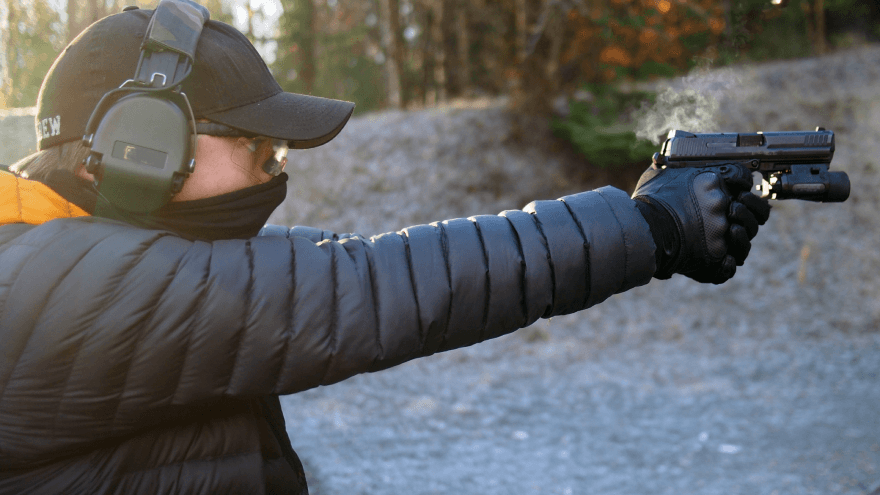
Handgun Hunting Ammunition
Always use premium-grade bullets. Even if your shot is not perfect, high-quality ammo can have the penetration you’re aiming for. Examples for such bullets include such as Speer DeepCurl, Barnes XPB, and Winchester Dual Bond.
The bare minimum for hunting wild hogs or deers with a revolver is the .357 Magnum or .41 Rem. Mag. For larger games consider .44 Rem. Mag. and larger revolver cartridges such as .454 Casull, or 460 S&W Magnum. If you are a master, 10mm auto can be an option too.
Choosing the Right Handgun and Ammo
Speaking about guns there are several types to choose from and try.
Single Shots
These are the basic no-frills handguns. You only get one shot before having to reload – usually shooting big rifle rounds, good for taking down large game animals. Examples include Thompson Center Contender which is a legendary pistol – it is accurate for long range precision shots. You can swap out the barrels to shoot different calibers. It’s chambered for big rifle rounds, perfect for large game. Another example is the Freedom Arms Single Shot. With this gun in .454 Casull you can go even for brown bears.
Single-Action Revolvers
SIngle actions are old school revolvers where you manually cock the hammer back before each shot. Simple and reliable, but kind of a hassle having to re-cock every time. Good example for great accuracy is the Ruger Blackhawk single-action revolver in .41 Mag, .44 Mag, .45 Colt. You can take elk or mule deer with single-actions.
Double-Action Revolvers
These are way more versatile. You can either cock the hammer the old fashioned way for single shots, or just pull the trigger and it’ll cock and fire in one smooth double-action. Perfect for quickly getting follow-up shots on animals. There are a lot of options manufactured by Colt, Smith & Wesson, etc. For instance, take a look at Taurus Raging Hunter double-action revolvers chambered in .44 Mag, .454 Casull and .460 S&W Mag.
Bolt-Actions
These pistols are the rare and fancy custom-built ones. They shoot big rifle rounds but you have to manually work the bolt to load each shot. Bolt-actions are very accurate though if you’re a really skilled shooter. Good examples include Savage Striker, and Remington XP-100.
Semi-Autos
Semi-autos are not very common for hunting, but some pistols are powerful and precise. The most popular for hunting are 45 ACP available in models like Glock 41, and 10mm. 10mm handgun hunting is popular for big game, but leaves small margin for errors as the bullet diameter is not big.
Do Not Forget
Hunting handguns require a little bit more attention when choosing gear and accessories.
Handgun Hunting Holsters
It is important to choose a quality holster that feels comfortable all day long, is easily accessible, and at the same time fits tight to your body. Look for holsters with adjustable retention mechanisms to securely hold your handgun in place and practice before buying.
Optics
Red Dot Sights (RDS) can add precision to your shooting. One popular choice is The Trijicon SRO. It comes in various dot sizes, including 2.5 MOA (at 100 yards, the 2.5 MOA dot covers approximately 2 1/2 inches), which balances precision and speed.
Tripods
It is not necessary but can be helpful to use the help of tripods for stabilizing your shooting and allow you to shoot from various positions. Look at BOG’s DeathGrip tripods or more expensive ones such as Vortex Summit Carbon II. You can always try bipods too, such as Skyline Precision. In any case, explore your options for accurate shot placement.
Wrap Up
Learning handgun hunting is a good challenge if you’re a seasoned shooter. It’s worth getting into it also because handguns can be useful as backup pieces or when you need to react lightning-fast.
As more and more hunters are getting into it these days, why not join our community? Share your favorite guns, swap stories and help each other other level up your game!

![The Ultimate Shooting Accessories for Every Weapon [A 2023 Beginners Guide]](https://vault.armsdirectory.com/wp-content/uploads/2023/08/30071223/The-Ultimate-Shooting-Accessories-for-Every-Weapon-A-2023-Beginners-Guide-1024x576.png)
![Gun Registration Requirements by State [What You Need to Know]](https://vault.armsdirectory.com/wp-content/uploads/2023/10/27073220/Gun-Registration-Requirements-by-State-What-You-Need-to-Know-1024x576.png)
